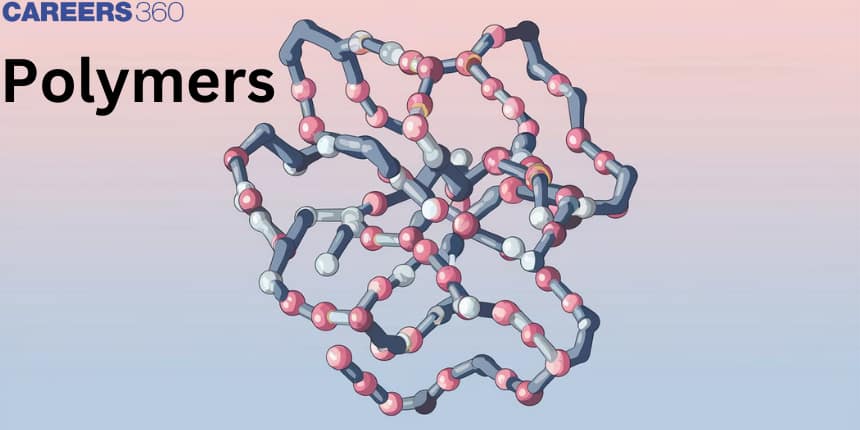polymers
In this fast world, we live in, with innovation and technological advancement pushing through the frontier of what is possible further day in and day out, one is likely to let slip from our memories the unsung heroes that make most of our modern conveniences a reality. One such hero would have to be the lowly polyamide, a class of synthetic polymers that have carved a niche integral to our lives. From the clothing worn on our backs to the cars we drive and the gadgets that surround us, polyamides are found everywhere, unseen but very essential in the products of everyday life. Polyamides were introduced in the 1930s under the common name nylons. They were developed first by Wallace Hume Carothers at DuPont. It was the age of synthetic raw materials, and since then, these versatile materials changed industries from textiles to automobile industries by integrating as an inseparable part of many products used in our lives. In this context, this article will take the reader on an exciting journey of polyamides with respect to structure, kinds, and applications, and exactly why such polymers have become part of modern society.
This Story also Contains
- Understanding of Polyamides
- Preparation of nylons
- Applications of Polyamides
- Recommended topic video on(polymers)
- Some Solved Examples

Understanding of Polyamides
Polyamides are a polymer class with an amide repeating unit, obtained by condensation of a carboxylic acid and an amine group. These polymers have high mechanical strength from the presence of intermolecular hydrogen bonding. Besides good stiffness, heat resistance, and chemical resistance, these polyamides could be prepared in different ways, either from the polycondensation or ring-opening polymerization method, likely to give different and variable characteristics.
Types of Polyamides: One of the most astonishing things about polyamides is their variety of types, which differ by property and application. The best known are nylon 6, otherwise polycaprolactam, nylon 66, otherwise known as polyhexamethylene adipamide, and nylon 11, also known as polyundecanoamide. What characterizes these polyamides from one another is the constitution of their monomers; therefore, changing their physical and chemical properties. For example, nylon 6 has good abrasion resistance and thus finds use in carpets and textile applications; nylon 66 is a high-strength material and hence applied in engineering for components like gears and bearings. Other forms of polyamides, such as nylon 4,6 and nylon 6,10, have also been designed for special requirements and applications.
These polymers possessing amide linkages are important examples of synthetic fibers and are termed nylons. The general method of preparation consists of the condensation polymerization of diamines with dicarboxylic acids and also of amino acids and their lactams.
Preparation of nylons
- Nylon 6,6: It is prepared by the condensation polymerization of hexamethylenediamine with adipic acid under high pressure and at high temperatures.

Nylon 6,6 is used in making sheets, bristles for brushes, and in the textile industry. - Nylon 6: It is obtained by heating caprolactum with water at a high temperature.

Nylon 6 is used for the manufacture of tire cords, fabrics, and ropes.
Applications of Polyamides
Versatility is something that makes polyamide simply mindboggling. Their uses range across a very large number of industries. In the textile industry, polyamides are used mainly to produce fabrics that are strong but are easily worn by users, whether in clothing, sportswear or even in carpets. In the automobile sector, so many car parts are nowadays made from polyamides—those used in the engine, fuel lines, and electrical connectors—on account of their excellent heat, chemical, and shock resistance. They have been applied in the electronics industry on printed circuit boards and in the insulation of wires and cables. Other uses of polyamides include medical applications—for example, in sutures, prosthetic devices, and systems for controlled drug release. Constantly ongoing technological progress results in the fact that constant new applications of polyamides are discovered, while researchers work on the improvement of their characteristics and the development of even more universal materials.
Recommended topic video on(polymers)
Some Solved Examples
Example 1:
Question: Nylon threads are made of which type of polymer?
Options:
1) Polyvinyl polymer
2) Polyester polymer
3) Polyamide polymer
4) Polyethylene polymer
Solution: Nylon threads are made of polyamide polymer. The correct answer is option (3).
Example 2:
Question: Which of the following is a polyamide?
Options:
1) Teflon
2) Nylon-6,6
3) Terylene
4) Bakelite
Solution: Nylon-6,6 is a polyamide. The correct answer is option (2).
Example 3:
Question: The two monomers for the synthesis of Nylon 6, 6 are:
1) $\mathrm{HOOC}\left(\mathrm{CH}_2\right)_6 \mathrm{COOH}$ and $\mathrm{H}_2 \mathrm{~N}\left(\mathrm{CH}_2\right)_6 \mathrm{NH}_2$
2) $\mathrm{HOOC}\left(\mathrm{CH}_2\right)_4 \mathrm{COOH}$ and $\mathrm{H}_2 \mathrm{~N}\left(\mathrm{CH}_2\right)_4 \mathrm{NH}_2$
3) $\mathrm{HOOC}\left(\mathrm{CH}_2\right)_4 \mathrm{COOH}$ and $\mathrm{H}_2 \mathrm{~N}\left(\mathrm{CH}_2\right) \mathrm{NNH}_2$
4) $\left.\mathrm{HOOC}_{\left(\mathrm{CH}_2\right.}\right)_6 \mathrm{COOH}$ and $\mathrm{H}_2 \mathrm{~N}\left(\mathrm{CH}_2\right)_4 \mathrm{NH}_2$
Solution: The two monomers for the synthesis of Nylon 6, 6 are $\mathrm{HOOC}\left(\mathrm{CH}_2\right)_4 \mathrm{COOH}$ and $\mathrm{H}_2 \mathrm{~N}\left(\mathrm{CH}_2\right) \mathrm{NH}_2$. The correct answer is option (3).
Example 4:
Question: The formation of which of the following polymers involves a hydrolysis reaction?
Options:
1) Nylon 6, 6
2) Terylene
3) Nylon 6
4) Bakelite
Solution: The formation of Nylon 6 involves a hydrolysis reaction. The correct answer is option (3).
Conclusion
These are rather great polymers that have turned the world around for us in so many ways. From clothes to wear, automobiles to drive, gadgets to use, the list of materials integrated into our lives and which cannot be dispensed with is endless. This, therefore, pretty much makes it obvious that with a technologically advancing future, polyamides are going to become one of the prime raw materials in building the industries of tomorrow. Either designing new kinds of polyamides for new properties or searching for new fields of applications for these versatile materials, the conclusion sounds the same: polyamides are sure to become a portion of our world once and for all. As we surge ahead in the pulse-pounding quest to stretch the limits, let us never forget that unsung heroes are needed to make it all possible—the polyamides that become building blocks of our modern society today.